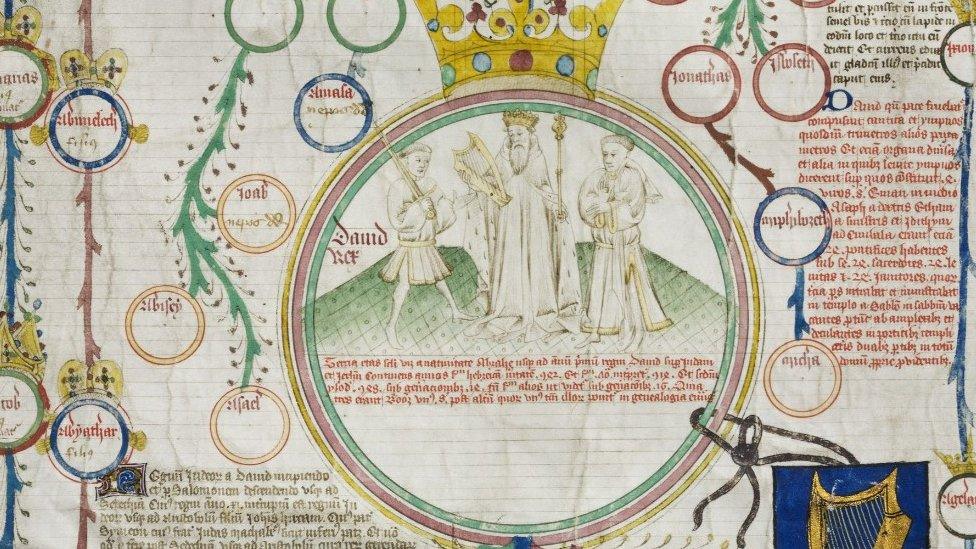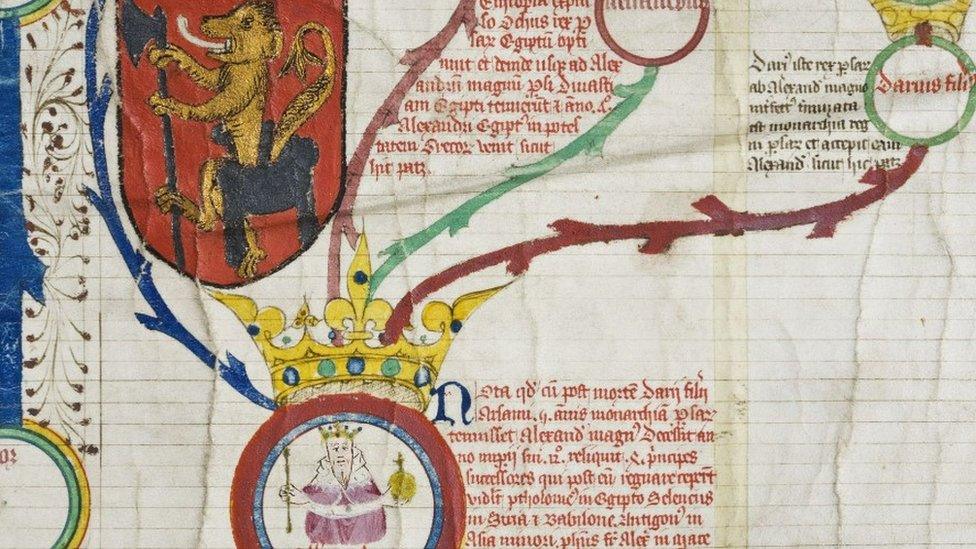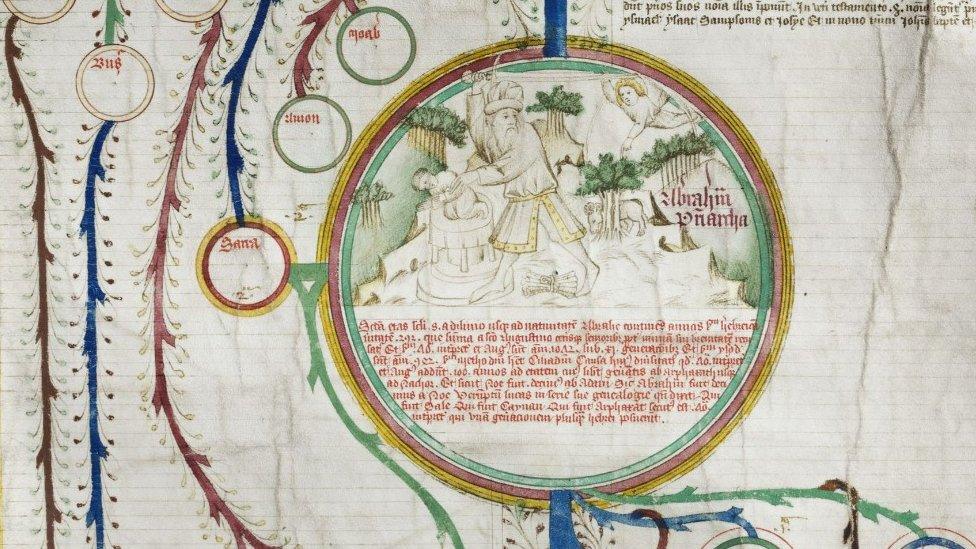Nottingham researchers to examine Wars of Roses manuscript
- Published

The roll is almost 50ft long and is considered one of the world's finest chronicles of its period
Researchers are to examine a rare manuscript made during the Wars of the Roses to understand more about it.
The roll, held by the London Society of Antiquaries, is almost 50ft (15m) long and is considered one of the world's finest late-medieval chronicles.
A Nottingham Trent University (NTU) team hope to digitise the roll, which they said presented unique challenges.
One researcher said: "This is a fascinating document which still holds secrets after hundreds of years."
'Beautiful object'
The team, led by Dr Natasha Hodgson, has been investigating a number of genealogical rolls - manuscripts designed to show the lineage of a royal or noble family - which appear to have been mass-produced during the reign of Henry VI.
Dr Hodgson said the team hoped to understand their cultural significance better.
"This one is particularly unique in terms of its size and detail," said Dr Hodgson, of the School of Arts and Humanities.
"The team are thrilled to help conserve this beautiful object and make it more accessible."

The team is using a new imaging technique to uncover the manuscript's secrets
The roll - known as MS 501 which is located at Burlington House, London - contains a series of images thought to have been created by William Abell, a well-known fifteenth-century manuscript illuminator based in London.
It was made between 1447 and 1455, in the period leading up to the Battle of St Albans when Henry VI's favourites were toppled from power.
The team said a new imaging method, developed by NTU for scanning manuscript rolls, will produce high resolution colour images of it.

A special wall has been created to hang the roll on so it can be studied
Distinguished Professor Haida Liang, a heritage scientist and physicist, who is leading the imaging process, said: "Hopefully this new method will be adopted more widely in the future as a form of advanced digitisation."
The manuscript is being delivered to the university's Clifton Campus, where it will be examined by the research team.
"This is one of the rare occasions that a museum object is brought over to us," added Prof Liang.
"Normally we have to take our mobile lab to the museum.
"Given the dimension of the roll, our technicians had to construct a special 'wall' to hang the roll on, to facilitate imaging."

Follow BBC East Midlands on Facebook, external, Twitter, external, or Instagram, external. Send your story ideas to eastmidsnews@bbc.co.uk, external.